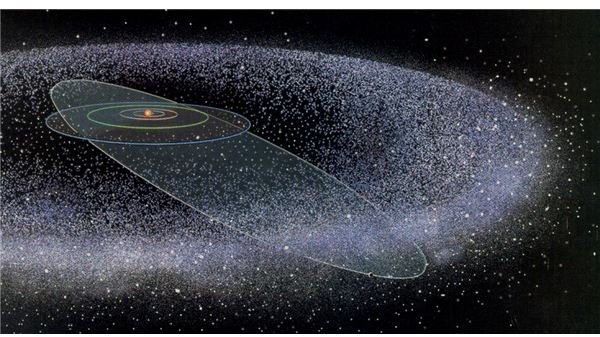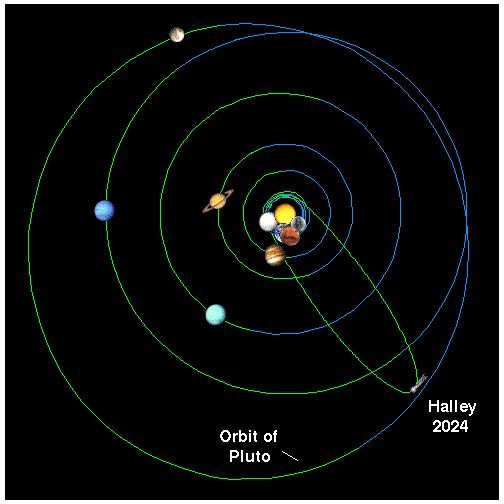Where do Comets Form - Oort Cloud and Scattered Disk - Solar System Objects
Introduction - What is a Comet
Comets are small bodies in our solar system that show a thin, hazy atmosphere and usually a tail when they are close enough to the sun. The hazy atmosphere is called the “coma.” The coma and the tail are formed due to solar radiation and solar wind affecting the nucleus of the coma. The nucleus of a comet is a collection of dust, rocks, and ice and may be a few hundred meters in diameter to dozens of kilometers in diameter. While comets may sound much like asteroids, asteroids have neither a coma nor a tail.
4000 Comets
Comets’ orbits may last a few years or several hundred thousand years. Where comets form depends upon the period of their orbit. Comets with shorter orbital periods come from a part of the solar system called the scattered disc, while comets with longer orbital periods are believed to come from the Oort cloud in the outer solar system. There are also rare hyperbolic comets that pass through the inner solar system one time before being hurled into interstellar space. As of 2010, there were nearly 4,000 known comets, of which just over 10% are short-orbital-period comets.
Short Period Comets
The scattered disc, where comets form that have short periods, is a far part of the solar system populated with what are called trans-Neptunian objects. The innermost part of the scattered disc has an overlap with part of what is known as the Kuiper belt, a donut-shaped region of orbiting bodies. But the scattered disc extends out much farther. As the part of the solar system where comets form, the scattered disc is home to the centaurs, a collection of icy objects between Jupiter and Neptune that are considered to be in their intermediate stage in migration toward the inner solar system. Disturbances from the planetary giants (Neptune and Jupiter) send the objects toward the sun, turning them into comets.
Long Period Comets - The Oort Cloud
The Oort cloud is where comets form that have longer orbital periods. The Oort cloud is located almost a whole light year from the sun, about one-quarter of the way to Proxima Centauri, which is the closest star to our solar system. To put it another way, the scattered disc is less than one one-thousandth the distance from the sun as the Oort cloud.
Gravitational disturbances caused by the huge outer planets or passing stars cause these comets to move toward the sun. The outer edge of the Oort cloud is defined as the gravitational boundary of the solar system. Objects in the Oort cloud are believed to be made of water, ammonia, and methane ice.
Astronomers believe that the Oort cloud is the source of the long-period comets (such as Halley’s comet) that enter into the inner solar system. The outermost edges of the Oort cloud is so far away from the sun as to be affected by the gravity of the Milky Way galaxy itself and passing stars. These gravitational influences can also dislodge comets from their orbits and throw them toward the inner solar system.

References
https://hubblesite.org/reference_desk/faq/answer.php.id=17&cat=solarsystem
https://neo.jpl.nasa.gov/faq/#ast
https://www.esa.int/SPECIALS/Rosetta/SEMSCM474OD_0.html
https://www.astro.uu.se/~bjorn/eng_comet.html
https://media4.obspm.fr/exoplanets/pages_corot-programme/nuage-oort.html
